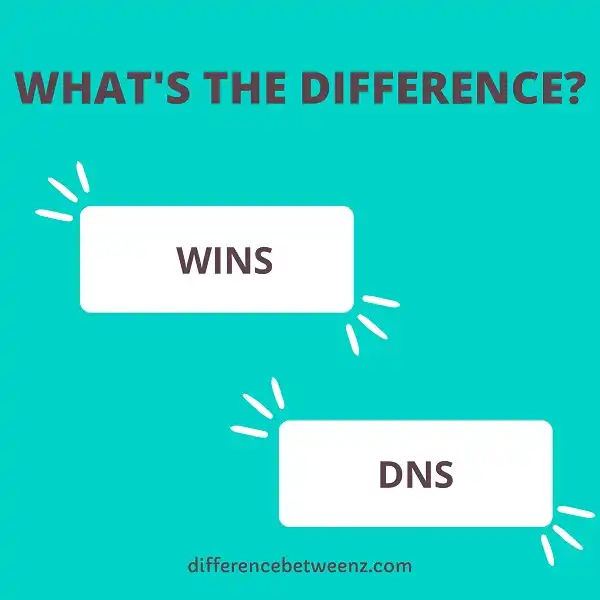Windows Internet Name Service (WINS) and Domain Name System (DNS) are both essential for discovering IP addresses in an intranet or the internet. Both WINS and DNS are protocols that store information about hosts in a network. However, there are some differences between WINS and DNS. Let’s see how these two different network services operate. There are many similarities between WINS and DNS, but their usage is different. This article explains the differences between WINS and DNS to help you understand which one is best suited for your organization’s needs.
What is WINS?
Windows Internet Name Service (WINS) is a distributed database that maintains a single virtual network database for all IP addresses on a TCP/IP network. WINS is used in the following situations:
- When the address resolution fails on a standalone computer or a network, and the host has no DNS server configured.
- When a hostname has been mapped to an IP address.
- When DNS server is unavailable, or when the user chooses not to use the DNS server.
What is DNS?
Domain Name System (DNS) is a distributed database that stores information about hostnames and their IP addresses. DNS is used in the following situations:
- When a hostname has been mapped to an IP address.
- When a user types in the IP address instead of the hostname.
- When a computer needs to find the hostname of another computer with which it needs to communicate.
- When a computer needs to find the hostname of the website that the user wants to visit.
- When a server needs to find the hostname of the computer that is connected to it.
Differences between WINS and DNS
The major difference between WINS and DNS is the method of storing host names and IP addresses.
- WINS stores this information in a single database, whereas DNS uses a distributed database and organizes the data using a hierarchy.
- In WINS, when a request is made for a hostname and an IP address, the request goes to the WINS server that hosts the database. The WINS server then queries the WINS database to find the hostname and IP address that corresponds to the request.
- In DNS, the request goes to the DNS server, which then uses DNS distributed database for the request.
- Another difference between WINS and DNS is the resolution time. Since WINS stores all the data in a single database and the request goes to a single server, the resolution time is relatively faster. On the other hand, DNS uses a distributed database and the request goes to multiple DNS servers. This increases the resolution time.
- Another difference between WINS and DNS is the method of resolving the host name. In WINS, the WINS server resolves the host name, whereas, in DNS, the DNS server resolves the host name. When the host name is resolved, the IP address of the hostname is found.
- The last difference between WINS and DNS is the scope. WINS resolves only host names that are configured in its database. DNS, on the other hand, resolves any hostname that is used on the network.
Which one should you use?
WINS is recommended for organizations that have a large number of computers running on Microsoft Windows Server operating systems. Since WINS is built into Windows, it is easy to set up, maintain, and use. DNS, on the other hand, is suitable for organizations that have a large network and require scalability. DNS is more scalable than WINS and can accommodate more computers on the network. DNS is recommended for organizations that have a large network and a requirement for scalability.
Conclusion
WINS and DNS are two important network services that store information about hosts in a network. WINS is a distributed database that maintains a single virtual network database for all IP addresses on a TCP/IP network. DNS is a distributed database that stores information about hostnames and their IP addresses. There are many similarities between WINS and DNS, but their usage is different.


